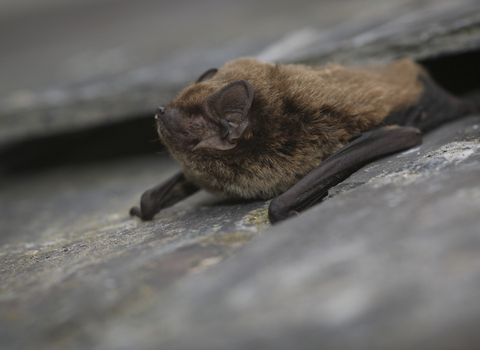
©Tom Marshall
Leisler's bat
The Leisler's bat flies fast and high near the treetops, but you might also spot it flying around lamp posts, looking for insects attracted to the light.
Scientific name
Nyctalus leisleriWhen to see
March to OctoberTop facts
Category
Stats
Length: 5-7cmWingspan: 26-32cm
Weight: 12-20g
Average lifespan: up to 9 years
Protected in the UK under the Wildlife and Countryside Act, 1981. European Protected Species under Annex IV of the European Habitats Directive.
